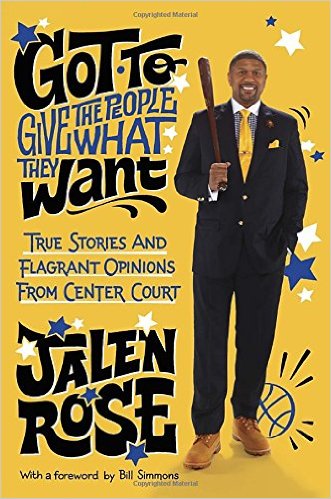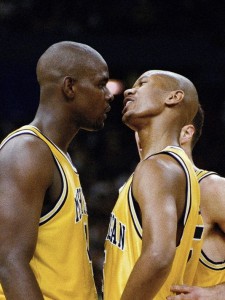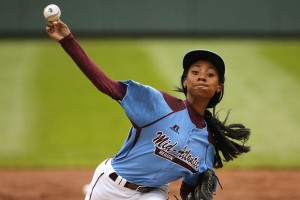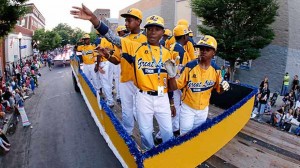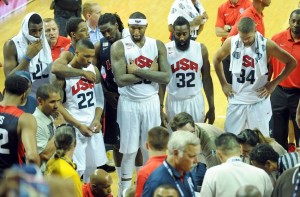by Jon Carroll
I remember the reign of the Fab Five as if it just happened. The baggy shorts, the black Nike socks with the matching black Air Max Barkleys, and most importantly, the trash talk. I was not a baller, but I, like many was drawn to this collection of five freshmen because of the brashness and flair with which they played together. They were the type of team I imagined myself playing on had basketball been my gift. In the aftermath of their careers as players, I have become a fan of Jalen Rose in particular because of his podcast, but also because of his work founding the Jalen Rose Leadership Academy (JRLA). When he started hitting media outlets to promote his book Got to Give the People What They Want: True Stories and Flagrant Opinions From Center Court, I downloaded it as soon as I could and devoured it in two days.
As someone who is a regular listener to the Jalen and Jacoby podcast and now radio show, much of the material covered in the book was not new. However, there was ample context to help understand the lens that focuses Rose’s worldview. From the detailed account of his key family relationships to the motivating force that was Jalen’s absent father, the reader is given a deeper understanding of why the retired NBA star viewed Michigan and the NCAA skeptically during his time on campus. For those who watched the ESPN30 for 30 documentary Fab Five and cringed as Rose and his former teammates recalled calling Black Duke players “Uncle Toms”, the text gives greater insight into why they did it and why they had no shame in doing so. Of course, given recent headlines, Rose spends significant time detailing his fractured relationship with childhood friend and Fab Five brother, Chris Webber. It’s a sad story, but a real one and it would not have been a Give the people what they want text without it. The same can be said for how Rose opens up and talk about other parts of his life.
When I read autobiographical texts, I am always looking to see how much the author is willing to look inside and expose the bad and the ugly along with the good. Mr. Rose’s text rates at an 8 on a 1-10 scale. He lamented not being able to be the type of present father that he hoped to be. As much as it is nice to be able to provide, he demonstrated awareness that the presence cannot be replaced. He also recounts having to go to jail on a driving under the influence (DUI) charge and how sobering that was. These stories and others helped humanize Rose over the course of the book so that there is substance behind the flagrant opinions and hot takes, which you may or may not agree with. I definitely recommend picking this book up if you are at all a fan of basketball. The insight that Mr. Rose has is truly unique and made for a quick enjoyable read.
Jon Carroll, for War Room Sports

